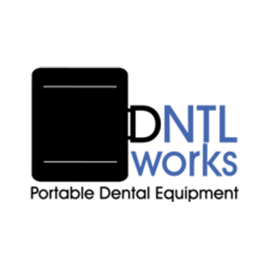
Comparing Mobile Dental Equipment: Finding the Best Unit for Your Needs
Share
Choosing the right mobile dental unit is essential for providing quality care in diverse environments. Whether you’re setting up a satellite office, working in a community health center, or providing outreach services, each dental unit offers unique features to meet specific needs. Here, we’ll compare key DNTLworks models, highlighting their benefits, applications, and technical specifications to help you make the best choice.
Key Features Comparison Table
| Feature | ProCart TDS | ProPak I | ProSeal II | ProQuest II |
|---|---|---|---|---|
| Portability | Lightweight, locking casters | Compact, padded handle | Lightweight, one-piece design | Single carrying case, wheels and handle |
| Suction Strength | 18 inches Hg | 14 inches Hg | 16 inches Hg | 18 inches Hg |
| Noise Level | 57 dB | 58 dB | 55 dB | 62 dB |
| Self-Contained Systems | Water, vacuum, compressor | Water, vacuum, compressor | Water, vacuum, filtration | Water, vacuum, compressor |
| Ideal Applications | Satellite offices, community health | Field dentistry, outreach | School programs, public health | Remote locations, military use |
Comparing Suction Strength and Portability
In mobile dental units, suction strength and portability are two of the most important features. Strong suction is critical for procedures that require effective saliva and debris removal, while portability enables easy transport between treatment sites.
Takeaway: For users needing the strongest suction in a mobile setting, the ProCart TDS and ProQuest II offer the highest performance at 18 inches Hg, while the ProPak I provides a slightly lower suction strength, ideal for more lightweight or field applications.
Noise Level Comparison for Comfortable Use
Low noise levels create a comfortable treatment environment for both patients and practitioners. Here’s how each model compares in terms of noise output.
Takeaway: The ProSeal II operates at 55 dB, making it the quietest option, which is advantageous for school-based programs or community health events. The ProQuest II has a slightly higher noise level, better suited for controlled environments like military installations.
Applications and Use Cases
Each mobile unit has been designed with specific applications in mind, ranging from general practice to specialized community health programs. Here’s a quick overview of the best applications for each unit:
| Unit | Best Applications | Notable Features |
|---|---|---|
| ProCart TDS | Satellite offices, community health centers | Self-contained, high suction, quiet |
| ProPak I | Field dentistry, rural outreach programs | Lightweight, padded handle, compact |
| ProSeal II | School-based programs, public health | Quiet operation, easy maintenance |
| ProQuest II | Military bases, remote locations | Single carrying case, impact-resistant |
Conclusion
When selecting a mobile dental unit, consider the specific requirements of your practice environment. The ProCart TDS offers the best overall performance for satellite offices and community health, while the ProSeal II provides quiet, efficient operation suited for school and community programs. For practitioners needing extreme portability, the ProPak I is ideal for on-the-go dental care. And finally, for military or remote applications, the ProQuest II provides rugged durability and powerful performance.
Each DNTLworks unit has unique strengths designed to support dental professionals wherever they serve, ensuring quality care and ease of use across diverse environments.
